An overview of the status, ongoing developments and future perspectives
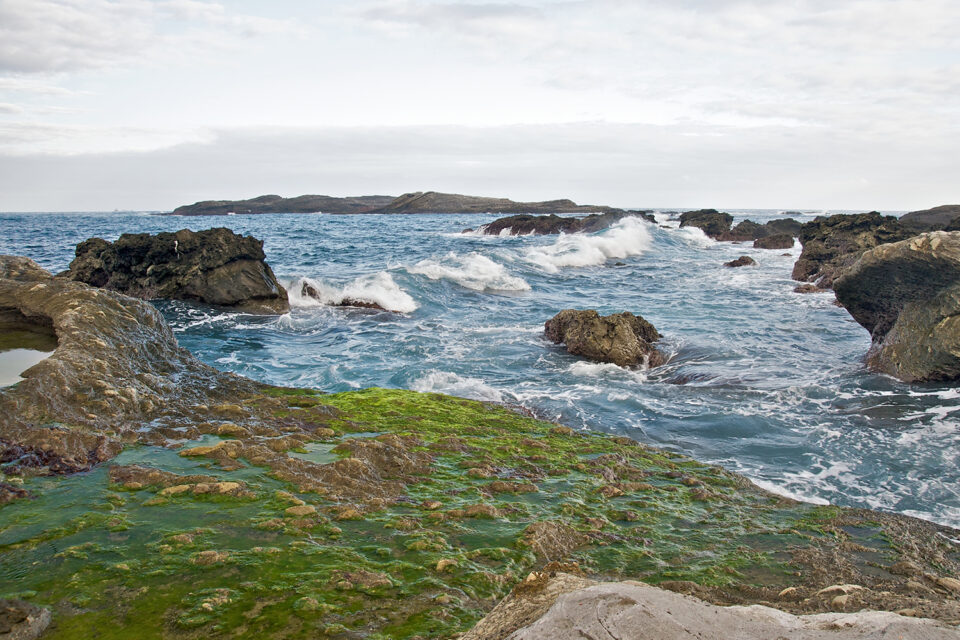
Macroalgae or seaweeds are an important biological resource, providing a variety of ecosystem services and socio-economic value. Their production is the fastest growing sector in global marine aquaculture, generating an excess of (U.S.) $13 billion annually, having significant potential for innovation, particularly on the development of valuable products (e.g., functional foods, cosmeceuticals, nutraceuticals and pharmaceuticals), and expected to gain further traction given the increasing perception of algae as healthy and sustainable foodstuffs, particularly in developing markets of western cultures.
The bulk of macroalgae aquaculture takes place in Southeast Asian and Pacific countries, of which China, the Philippines, Indonesia, Republic of Korea and Japan contribute a staggering ~98 percent of global seaweed biomass production and sustained by as few as seven macroalgal genera. Most macroalgae production involves red seaweed species destined for the hydrocolloid industry, such as Eucheuma spp., Kappaphycus alvarezii and Gracilaria spp., whereas others – mostly brown seaweeds like Saccharina japonica, Undaria pinnatifida, Sargassum fusiform and others – are used directly as human food.
In contrast, the output of green macroalgae (Chlorophyta) aquaculture currently represents only a fraction of global landings (< 1 percent), lagging well behind the most relevant taxa in terms of production metrics. Despite presenting comparably lower production figures, the aquaculture of green seaweeds has witnessed an increasing trend in productivity and commercial diversification over the last decades (Fig. 1).

Expanding green macroalgae aquaculture can help the diversification and improvement of the sector, by providing a diverse pool of largely untapped biological resources, with intrinsic potential to unlock an array of different biotechnological applications. Indeed, due to the evolutionary divergence between the major macroalgae phyla (Chlorophyta, Rhodophyta and Ochrophyta), they differ in their elemental composition, metabolomic and fatty acid profiles, nutritional properties, polysaccharide types and organoleptic properties.
Green macroalgae have different applications, including biorefinery operations, land-based integrated multitrophic aquaculture (IMTA) systems and high-value food products in modern cuisine. Examples of developing industrial applications using green macroalgae as raw material include the extraction of cellulose or sulphated polysaccharides and the production of biochar, bioethanol and bioplastics, while an indefinite number of bioactive molecules will keep emerging from green macroalgae metabolite screening studies.
This article – summarized and adapted from the original publication (Moreira, A. et al. 2021. The underexplored potential of green macroalgae in aquaculture. Rev Aquac. 2021;00:1–22) – provides a complete overview of the status, ongoing developments and future perspectives of green macroalgae in aquaculture. A detailed description of the diversity and potential of major taxa are given alongside known applications, regional importance and global production estimates, as well as existing cultivation techniques. Authors also analyzed existing literature on the prospection of bioactive compounds and conclude by outlining future perspectives of this mostly underexplored group of macroalgae in aquaculture.
Cultivation methods
A variety of technological approaches are currently employed in the commercial-scale aquaculture of green macroalgae. Different phases of the production chain (propagule production, nursery, grow-out) require specific techniques depending on target species biology and ecophysiology, and the specificities of site location.
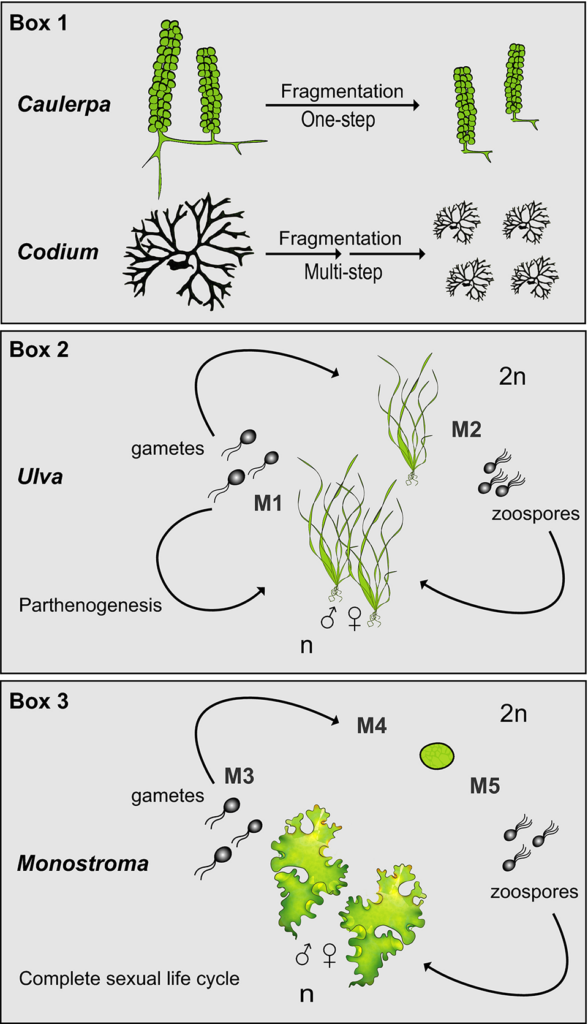
Primarily, the production chain largely depends on the ability to produce seedstock of the target species in sufficient quantity and quality to readily supply biomass production demand. Different methods are currently employed to obtain viable propagules (often referred to as seedlings) in commercial-scale aquaculture of green seaweeds including vegetative propagation; asexual propagation via parthenogenesis; or sexual reproduction via gamete conjugation (Fig. 2).
Most artificial propagule production methods employed in commercial-scale aquaculture of Ulvophycean [a class of green algae distinguished mainly on the basis of ultrastructural morphology, life cycle and molecular phylogenetic data; it includes well-known green algae like sea lettuce, Ulva and Caulerpa, Codium, Acetabularia and others] taxa are relatively well developed and mostly reliant on asexual propagation methods (vegetative propagation or parthenogenesis).
Once propagules are obtained and present a suitable size for transplantation, the grow-out phase occurs by transferring the propagules to open water cultivation grounds or to land-based systems. Traditionally, the main cultivation techniques involve the use of ropes or nets as artificial substrata (open sea), or in land-based tanks or ponds. These can be classified as follows: line or net cultivation methods – propagules are attached to ropes or nets at varying depths; floating raft cultivation methods – seeded ropes or nets are held within a rigid floating frame at the surface; tank or tumble culture cultivation methods – culture takes place in tanks under free-floating conditions; other methods include direct planting on the ocean floor or attached to artificial substrates close to the bottom.
Sources of bioactive compounds
A survey of the published literature on natural compounds extracted from macroalgae reveals biased screening and bioprospecting efforts in the major groups of seaweeds. Authors have reported that only 8 percent of marine natural products isolated from macroalgae in the MarinLit database, dedicated to research on marine natural products, originated from green macroalgae, while red and brown macroalgae accounted for 53 and 39 percent, respectively. Within green macroalgae, the order Bryopsidales accounted for approximately two-thirds of these compounds. Natural compounds extracted from green macroalgae identified with strong bioactive properties are highly diverse and include sulphated polysaccharides, lipids, photosynthetic pigments and various secondary metabolites.
Macroalgae are potential sources of sulphated polysaccharides, important components of cell walls. Several antioxidant, anti-inflammatory, antitumoral, immunomodulatory, anticoagulant and antiviral activities have been reported for green macroalgal sulphated polysaccharides. The bioactive properties displayed by sulphated polysaccharides extracted from Ulvophycean taxa are highly regarded for different biomedical applications, including strong blood anticoagulant activity, antitumoral activity against cancer cell lines and antiviral and immunostimulatory activities.
Macroalgae are a potential source for large-scale production of essential polyunsaturated fatty acids (PUFA), considered as essential components in human and animal health and nutrition and with wide applications in the nutraceutical and pharmacological industries. Various species have been reported as having high relative abundance of long-chain PUFAs.
Photosynthetic pigments are light-harvesting compounds present in plants and algae, and their main function is to absorb light energy within the visible spectrum and convert it to chemical energy in the process of photosynthesis. However, some pigments have strong antioxidant properties and their main function in the cell is to avoid light damage by heat dissipation or as part of reactive oxygen species scavenging mechanisms. Photosynthetic pigments of green macroalgae have been reported to provide several health benefits that include antioxidant, anti-inflammatory, antitumoral and antiangiogenic activities.
A variety of other bioactive compounds have been described in green macroalgae. For example, secondary metabolites extracted from species of the genus Caulerpa are particularly diverse, with described neuroprotective, anti-inflammatory, antitumoral and antifungal effects. Among these metabolites, one compound has potential for therapeutical applications in the treatment of colorectal carcinoma, and a novel compound from Ulva fasciata has been found active against breast cancer cells.
Potential and perspectives
Our review outlines the potential of further exploring green macroalgae in aquaculture and argues that this group of macroalgae are a compelling option under the current quest for commercial diversification of products and expansion of the sector. With a remarkable diversity of morphological forms, eco-physiological traits, bioactive molecules and propagation potentials, green macroalgae constitute an important, yet underexplored aquaculture resource. Despite presenting comparably lower production volumes compared with red and brown seaweeds, global green macroalgae aquaculture reportedly accounts for approximately 20,000 metric tons fresh weight annually.
We believe this volume is significantly underestimated, particularly considering the absence of production data from Japan, where commercial cultivation of Monostroma, Ulva and Caulerpa species is a long-standing and ongoing activity. In addition, some emerging taxa in aquaculture remain unaccounted for in international databases, while taxonomic uncertainty of species and/or seaweed-derived products creates additional challenges to the academic, public and industrial players. These issues call for more detailed molecular surveys and transparent data communication of green macroalgae aquaculture goods to provide more standardized, higher quality, traceable products, important requisites to increase consumer and industrial confidence.
Various green macroalgal taxa offer many advantages for cultivation, including unique diversity; high tolerance to extreme abiotic conditions; high potential for biofiltration; easiness in obtaining quality seed; exclusive bioactive compounds; and high market value. Cultivation technologies are relatively well developed for many major lineages and can support further domestication of local species or varieties. Additionally, green macroalgae aquaculture is expected to benefit from the implementation of nursery facilities dedicated to producing high-quality propagules of defined desirable strains, ready to supply farmers upon demand. For instance, commercial nursery facilities are now established in Europe.
Furthermore, improvements to conventional propagule production methods are expected from advances in the manipulation of protoplasts (somatic cells devoid of cell walls able to regenerate into de novo plants) to produce protoplast-derived propagules in aquaculture. Compelling arguments on the use of protoplast-derived propagules in aquaculture include the potential for genetic engineering, genetic transformation and somatic hybridization processes that will facilitate the development of improved strains in aquaculture. Green macroalgae may be at the forefront of protoplast-mediated propagation technologies.
Macroalgal aquaculture is expected to gain traction in emerging markets, particularly in Europe where large-scale consortium projects/networks have been joining efforts to boost macroalgae aquaculture; also aiding in the development and publication of guidelines towards macroalgae aquaculture sustainability. Some of the major drivers impelling the movement include: (i) increased perception of macroalgae as sustainable healthy foods; (ii) the quest for alternative sustainable protein sources; and (iii) rising industrial interest.
While changing western culture’s dietary regimes to include macroalgae in the menu is an ongoing process, positive signs are emerging in the field of “phycogastronomy,” taken the example of high-end restaurants that currently offer a variety of dishes featuring green macroalgae as the main delicacy ingredient. On the other hand, implementation of industrial operations using green seaweeds as raw material is expected to increase demand, given the growing interest in implementing biorefineries to produce various products. Ultimately, sustainability of the entire production chain will define the viability of each operation.
Today, sustainability assessments are scarce but required to unlock green macroalgae (and other seaweeds) potentials. Sustainability of products comprises three components: environment, economy and social aspects. These three components must be properly assessed and balanced when products are designed or improved. Life-cycle assessment (LCA) is a structured, comprehensive and internationally standardized method to evaluate environmental impacts of the “bioeconomy.” The LCA aims to assess the potential environmental impacts associated with a product, a process or a system throughout its lifecycle. Overall, various LCA studies suggest that an effective transition to renewable energies, and to more eco-friendly materials will greatly increase macroalgae aquaculture sustainability. Synergies between the academic and private sectors will further allow developing multidisciplinary methodologies assessing macroalgae aquaculture activity to gain market and social trust.
Despite the existing opportunities for green macroalgae, their production is not expected to reach the order of magnitude of their red and brown macroalgal counterparts. Instead, it is likely that green macroalgae will continue occupying specialized market niches where high-value products are favored as opposed to large quantity production of lower price biomass. This has been the case in the Asia-Pacific region, where green macroalgae have been cultivated to produce specialty food products, constituting relatively small, localized market niches, within specific cultural backgrounds.
To circumvent the competitive advantages of the red and brown seaweed-hydrocolloid industry thriving in Asia, the future of seaweed aquaculture in emerging markets like Europe may not necessarily depend on producing large amounts of biomass, but rather focus on adding value to the seaweed production chain, through byproduct development like fodder, fertilizers and bioactive compounds, and capitalizing on societal economic and environmental benefits.
The unique features presented by Ulvophycean macroalgae – including distinct biochemical profiles and organoleptic properties, high nutrient uptake and propagation capacity, diverse cultivation technologies, tolerance to extreme conditions – represent a remarkable potential for innovation in macroalgal aquaculture.
Now that you've reached the end of the article ...
… please consider supporting GSA’s mission to advance responsible seafood practices through education, advocacy and third-party assurances. The Advocate aims to document the evolution of responsible seafood practices and share the expansive knowledge of our vast network of contributors.
By becoming a Global Seafood Alliance member, you’re ensuring that all of the pre-competitive work we do through member benefits, resources and events can continue. Individual membership costs just $50 a year.
Not a GSA member? Join us.
Authors
-
Anthony Moreira, Ph.D.
Centre for Environmental and Marine Studies (CESAM) & Department of Biology, University of Aveiro, Portugal
-
Sónia Cruz, Ph.D.
Centre for Environmental and Marine Studies (CESAM) & Department of Biology, University of Aveiro, Portugal
-
Rúben Marques, M.Sc.
Centre for Environmental and Marine Studies (CESAM) & Department of Biology, University of Aveiro, Portugal
-
Paulo Cartaxana, Ph.D.
Corresponding author
Centre for Environmental and Marine Studies (CESAM) & Department of Biology, University of Aveiro, Portugal[116,112,46,97,117,64,97,110,97,120,97,116,114,97,99,112]
Tagged With
Related Posts
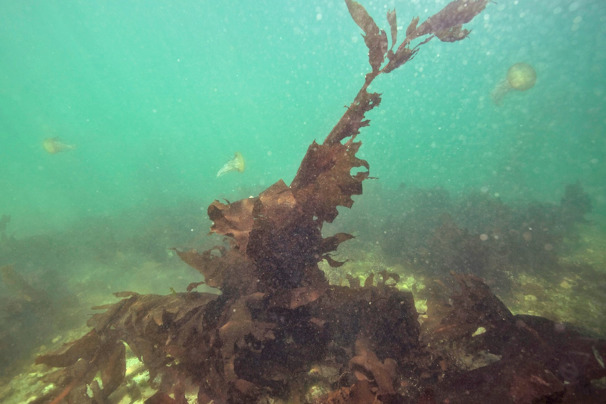
Aquafeeds
Assessing the effect of four macroalgae inclusions in diets of Pacific white shrimp
Evaluating macroalgae inclusions in L. vannamei diets show improved growth and intestinal microbiota and prevention of oxidative damage.
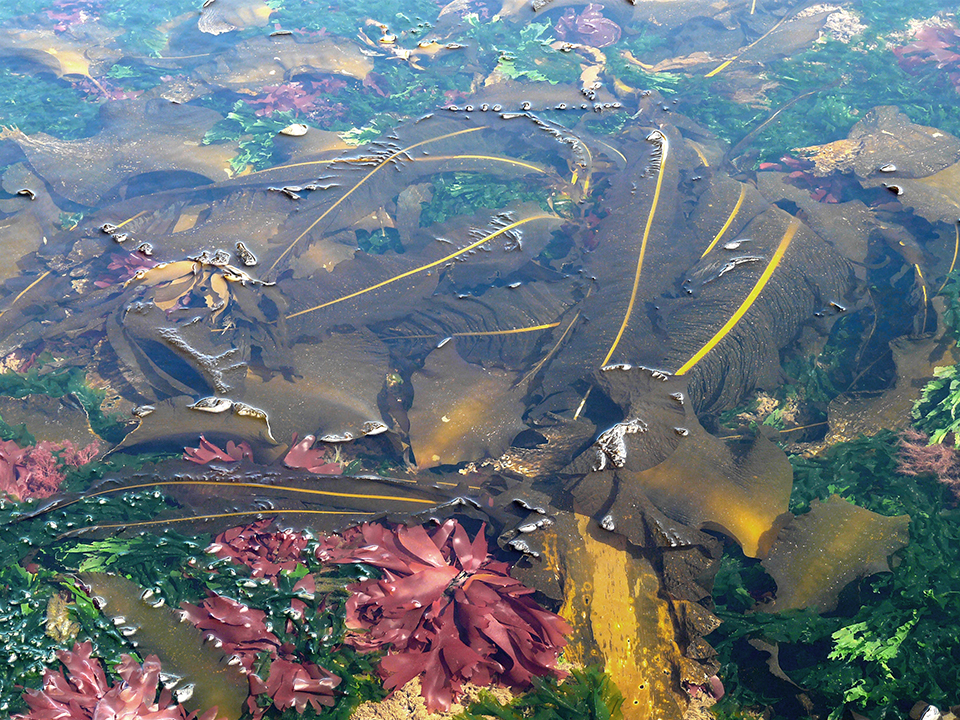
Responsibility
Seaweed aquaculture provides diversified products, key ecosystem functions, part 1
Seaweed plays key roles in Earth processes as a primary producer and link in the food webs of coastal and estuarine ecosystems.
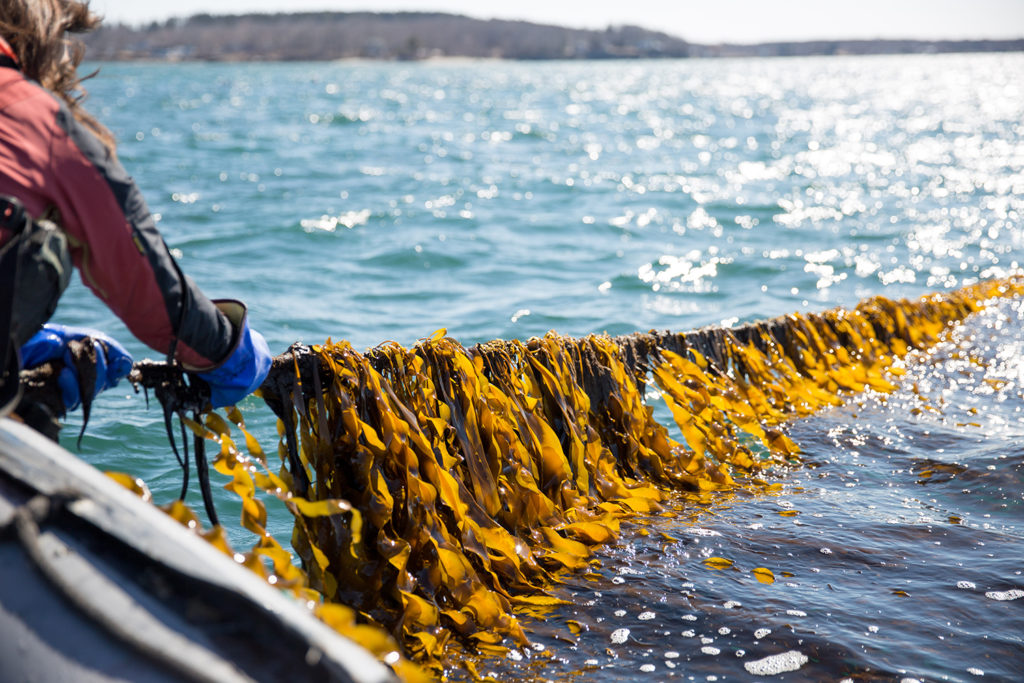
Intelligence
Kelp is the climate-friendly crop that could
Kelp aquaculture is poised for growth on both U.S. coasts, but one grower network in Maine is building a brand and demand for domestic seaweed.
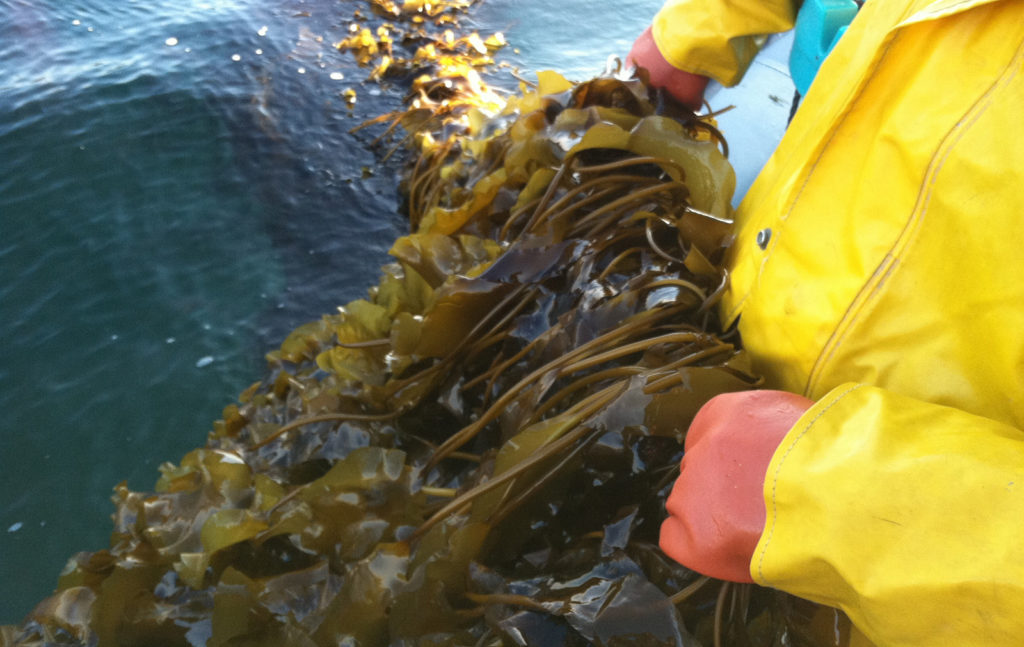
Responsibility
Lean and green, what’s not to love about seaweed?
Grown for hundreds of years, seaweed (sugar kelp, specifically) is the fruit of a nascent U.S. aquaculture industry supplying chefs, home cooks and inspiring fresh and frozen food products.


